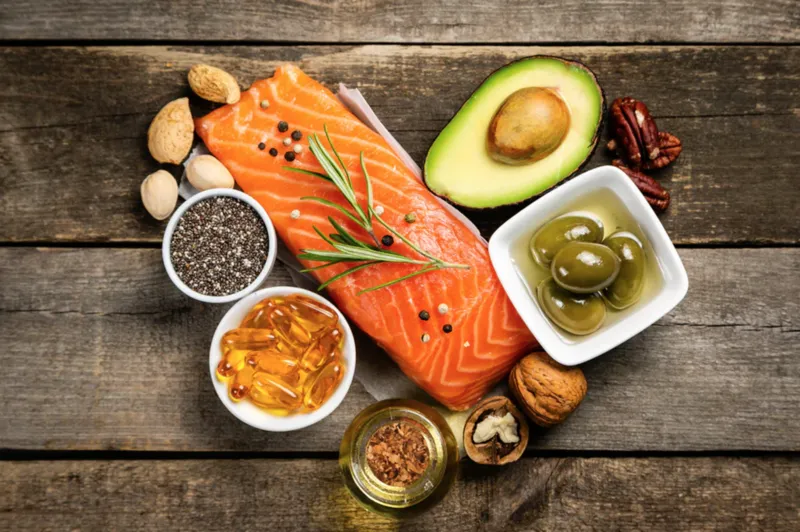Did you know the difference between ‘saturated fatty acids’ and ‘unsaturated fatty acids’?
Did you know the difference between ‘saturated fatty acids‘ and ‘unsaturated fatty acids’?

The fats we eat every day have both advantages and disadvantages because fats are different. Fats can divide into 2 main types: ‘saturated fatty acids’ and ‘unsaturated fatty acids’. What many people may know as ‘good fats’ and ‘bad fats’. They have different properties. If we can choose to eat them in the right amount, then the various systems will be able to absorb them for use and benefit the body effectively.
Saturated fatty acids
Saturated fatty acids are fats that full-fledged, such as carbon, hydrogen, and oxygen. That are completely bound together in chains and have no gaps left to react with any substances in the body. Therefore, it is considered unnecessary fat because it will increase bad cholesterol (LDL) in the blood if consumed in excess. Having high bad cholesterol in the blood will increase the risk of clogged blood vessels, causing obesity, heart disease, and stroke.
However, saturated fat is still necessary for the body, but it consume ยูฟ่าเบท https://ufabet999.app in limited quantities. Most saturated fats are found in meat and dairy products, such as fatty beef, lamb, pork (including bacon and ham), chicken with skin, beef fat (tallow). Lard, coconut milk, egg yolks, cream, butter, cheese, and full-fat or skim milk dairy products, as well as various fried foods. Junk foods are another type of food that is high in saturated fat.
Unsaturated fatty acids
Unsaturated fatty acids are fats in which carbon, hydrogen and oxygen are not completely bound together. There are still gaps in the chain and they are ready to be changed into other substances. Therefore, they are necessary for absorption and use in various parts of the body. Most of them are fats that come from plants (except for some plants such as coconut milk and palm oil which are saturated fats). Unsaturated fats have less effect on obesity and cardiovascular disease than saturated fats.
Unsaturated fatty acids are divided into two main types:
- Monounsaturated Fat (MUFA) is considered good fat because it helps reduce bad cholesterol (LDL) in the blood, especially when taken in place of saturated fat. Sources of monounsaturated fat found in foods such as plant fats such as rice bran oil, canola oil, olive oil, peanuts, pistachios, almonds, avocados, etc.
- Polyunsaturated Fat (PUFA) is fat that has carbon atoms bonded together in 2 or more double bonds. It is also considered good fat and can divide into 2 types: Omega 3 and Omega 6.
- Omega 3 is found in many types of fish such as salmon, sardines, tuna, mackerel, swai, etc. Some plant-base fat foods such as flax seeds, chia seeds, walnuts, soybean oil, canola oil, etc. Its outstanding properties are that it helps fight inflammation, prevents blood clotting, reduces triglycerides, and helps blood vessels function better.
Omega 6 is found in high amounts some plant-base fats.
Soybean oil, corn oil, safflower oil, sesame oil, walnuts, sunflower seeds, etc. Its outstanding properties are reducing the clumping of platelets, normalizing blood vessels in the heart, reducing high blood pressure, reducing the growth of cancer cells, helping to nourish the liver and is effective in patients who drink alcohol, and preventing Alzheimer’s disease by reducing the hardening of the red blood cell membrane, allowing the brain to receive more oxygen.



